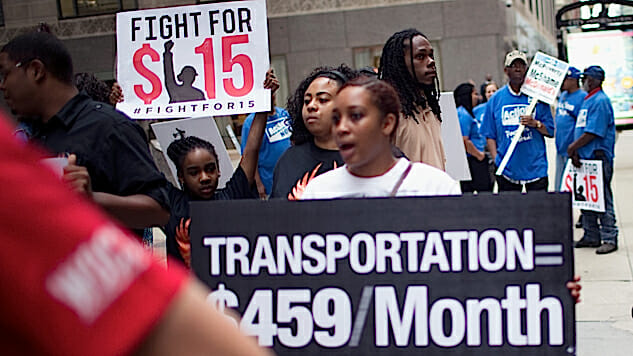The Women’s Strike You Didn’t Hear About, and Why it Matters
Photo by Scott Olson/Getty
What if you didn’t have to smile at sexist jokes to keep your job? Or be the only person responsible for sink-load upon sink-load of dishes? What if you didn’t have to change all the diapers or cook every meal? These are things most women do every day without complaint or even a second thought.
Until last week.
When Donald Trump was sworn into office, thousands of women were not watching. In fact, thousands of women were doing nothing at all.
While women who could march made necessary noise, a two-day global strike that happened in concordance with the march helped make a lasting impact.
“We want to change the conversation and focus on the power that we have,” said Candi Churchill, an organizer for National Women’s Liberation, which put on the strike. “We have power when we take collective action together.”
Women Strike aimed to draw attention to racism, bigotry, health care issues, child care issues, a $15 minimum wage and more. To get the point across, thousands of women were absent from their day jobs on inauguration day, but, more importantly, they refused to do any traditional woman’s work—from cooking to child care to being polite when they don’t want to be.
“I am striking from my paid job on Friday,” said Kendra Vincent, an organizer with NWL. “I am also striking from putting any time and energy into being less than my genuine self. There are a lot of social expectations on women, and it would be exhausting to fight it all the time. But on these two days, there will be no fake smiles.”
-

-

-

-

-

-

-

-

-

-

-

-

-

-

-

-

-

-

-

-

-

-

-

-

-

-

-

-

-

-

-

-

-

-

-

-

-

-

-

-








































